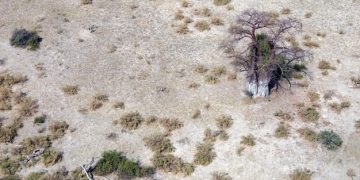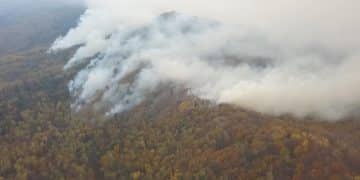Climate Change’s Impact on US Forests & Carbon Sequestration
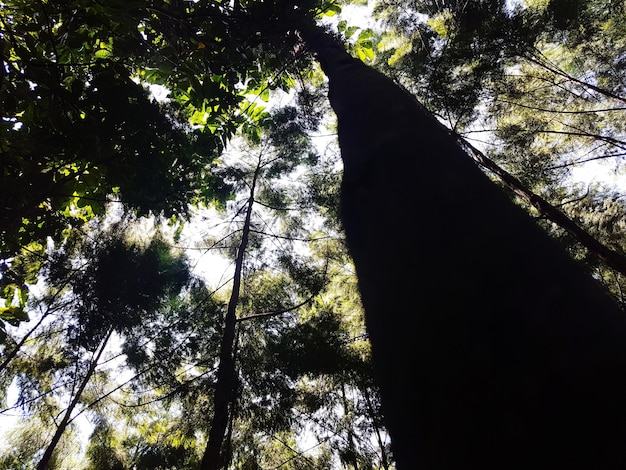
Climate change significantly alters the health of US forests by increasing stress from wildfires, pests, and drought, thereby threatening their crucial capacity to sequester atmospheric carbon.
Forests across the United States represent more than just scenic landscapes; they are vital engines of our planet’s carbon cycle, acting as natural sinks that absorb vast amounts of atmospheric carbon dioxide. However, a critical question looms: How Does Climate Change Affect the Health of US Forests and Their Ability to Sequester Carbon? Understanding this complex interrelationship is paramount, as the health of these ecosystems directly influences global climate regulation and the resilience of natural systems.
Climate Change and Forest Stress Factors
Climate change introduces a cascade of stressors that directly assault the vitality of US forests. These pressures are not isolated; rather, they interact in complex ways, often amplifying each other’s effects and pushing forest ecosystems to their limits. Warmer temperatures, altered precipitation patterns, and increased atmospheric CO2 concentrations combine to create an environment where forests struggle to maintain their health and historical functions.
One of the most immediate and visible impacts is the exacerbation of wildfire regimes. Rising temperatures and prolonged droughts create drier conditions, turning forests into tinderboxes. The frequency, intensity, and size of wildfires have dramatically increased across many US regions, particularly in the West. These megafires destroy vast tracts of forest, releasing stored carbon back into the atmosphere and leaving behind landscapes that may take decades, if not centuries, to recover, or that may shift to non-forest ecosystems entirely.
Increased Wildfire Activity
The link between climate change and wildfires is undeniable. Warmer springs and summers lead to earlier snowmelt and longer dry seasons, extending the fire season and increasing the flammability of vegetation. This creates a dangerous feedback loop where more fires lead to more carbon emissions, further accelerating climate change.
- Extended Fire Seasons: Fire seasons are starting earlier and ending later.
- Increased Fire Severity: Fires burn hotter and more intensely, leading to greater tree mortality.
- Larger Burned Areas: The total acreage consumed by wildfires has grown significantly.
Beyond fire, forests face increased vulnerability to pest outbreaks and diseases. Many insect species, such as bark beetles, thrive in warmer temperatures, allowing them to complete more breeding cycles per year and expand their geographic ranges. Trees weakened by drought are less capable of defending themselves against these infestations, leading to widespread mortality events. This pest-induced tree mortality also releases stored carbon and alters forest structure.
Changes in precipitation, whether through prolonged droughts or increased intensity of rain events, also exert tremendous pressure. Droughts stress trees, making them susceptible to fire and disease, and reducing their growth rate, thus limiting carbon uptake. Conversely, heavy rainfall can lead to increased soil erosion and nutrient leaching, further weakening forest health. The cumulative effect of these stressors is a profound shift in forest dynamics, pushing many ecosystems towards a tipping point.
Impact on Tree Growth and Carbon Sequestration Capacity
The ability of forests to sequester carbon hinges on the health and growth rates of individual trees and the forest ecosystem as a whole. When trees grow, they absorb CO2 from the atmosphere through photosynthesis, converting it into biomass—wood, leaves, roots. This process locks carbon away, mitigating atmospheric CO2 levels. However, climate change directly challenges this fundamental capacity.
Rising temperatures can initially boost growth in some northern forests, prolonging growing seasons. However, this benefit is often offset by increased water stress in drier regions and by the negative impacts of heat stress, which can reduce photosynthetic efficiency. Drought, in particular, is a major impediment to growth, forcing trees to conserve water by closing their stomata, thereby limiting CO2 uptake.
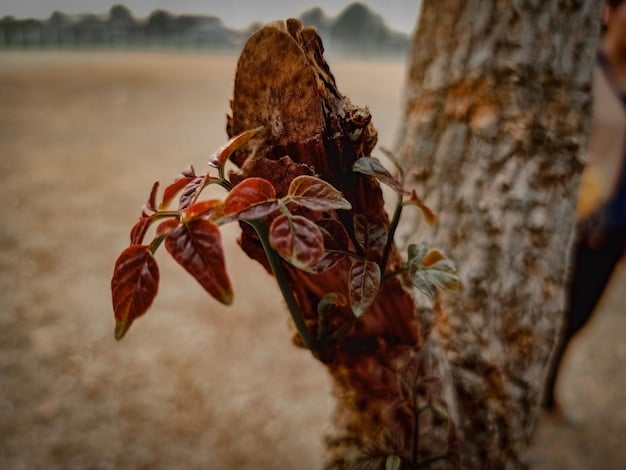
The combined effects of wildfire, pests, and drought lead to substantial tree mortality. When trees die prematurely, the carbon they stored is either released back into the atmosphere through decomposition or combustion, or it remains locked in dead biomass for an uncertain period. This loss of living biomass directly diminishes the forest’s current and future capacity to sequester carbon. Furthermore, newly established trees or regenerating forests take many decades to accumulate the same amount of carbon as mature forests, creating a significant carbon debt.
Reduced Carbon Uptake
The efficiency of carbon sequestration is not just about the number of trees; it’s about the health and vigor of each tree. Stressed trees grow slower, storing less carbon. Large-scale tree mortality events can even turn forests from carbon sinks into carbon sources, releasing more carbon than they absorb.
- Slower Growth Rates: Trees under stress absorb less CO2.
- Increased Mortality: Dead trees release stored carbon.
- Ecosystem Shift: Some forested areas may convert to grasslands or shrublands.
Moreover, the increased frequency of extreme weather events, such as severe storms and strong winds, can cause physical damage to trees and forest stands, leading to further carbon release. The long-term implications are clear: a less healthy forest is a less effective carbon sink. Projections suggest that without significant mitigation efforts, the carbon sequestration services provided by US forests could decline significantly, making the fight against climate change even more challenging.
Vulnerability of Different US Forest Biomes
The United States boasts a diverse array of forest biomes, each with unique characteristics and vulnerabilities to climate change. From the arid forests of the Southwest to the temperate rainforests of the Pacific Northwest and the boreal forests of Alaska, the specific challenges and impacts vary significantly, necessitating region-specific adaptation strategies.
In the Western US, forests grappling with recurrent droughts and increasing temperatures are at amplified risk of large-scale, high-intensity wildfires. The Ponderosa pine and mixed-conifer forests, adapted to historical regimes of low-intensity fires, are now experiencing fires that exceed their natural resilience, leading to significant tree mortality and ecosystem conversion. The impacts are clearly visible in states like California, Oregon, and Colorado, where wildfire seasons have become notoriously destructive.
The Southeastern US, while not immune to wildfires, faces additional pressures from altered precipitation patterns and increased storm intensity. Warmer winters can lead to pest outbreaks that previously were held in check by colder temperatures. Coastal forests are also grappling with sea-level rise and saltwater intrusion, which can lead to diebacks and ecosystem degradation, particularly in low-lying areas. Rising sea levels push saltwater into freshwater ecosystems, often killing trees that cannot tolerate saline conditions.
Regional Climate Impacts
Each forest biome is responding differently to the changing climate, with some showing more resilience than others, while many are exhibiting clear signs of stress. This regional specificity is crucial for understanding and addressing the broader impacts on national carbon sequestration goals.
- Western Forests: Dominated by megadroughts and catastrophic wildfires.
- Southeastern Forests: Prone to increased storm intensity, pest outbreaks, and sea-level rise.
- Northeastern Forests: Experience shifts in species composition due to warming temperatures.
- Alaskan Boreal Forests: Face permafrost thaw, increased fire frequency, and insect outbreaks.
The forests of the Northeast are experiencing a northward shift in optimal growing conditions for many tree species. While some southern species may expand their range, native northern species could decline. This shift in species composition can alter forest structure and function, potentially affecting their ability to sequester carbon. In Alaska’s vast boreal forests, warming temperatures are causing permafrost to thaw, leading to changes in hydrology and soil stability, which in turn can impact tree health and increase the likelihood of massive wildfires, releasing vast stores of carbon from the permafrost itself.
Understanding these regional vulnerabilities is key to developing tailored forest management and conservation strategies. What works in a dry western forest may not be applicable in a humid eastern one, emphasizing the need for localized solutions informed by sound ecological science.
The Role of Forest Management and Adaptation Strategies
Given the escalating threats posed by climate change, proactive and adaptive forest management strategies are indispensable for preserving forest health and their carbon sequestration capabilities. These strategies aim to build forest resilience, reduce vulnerability to stressors, and enhance their capacity to absorb and store carbon over the long term.
One critical aspect is the implementation of fuel reduction treatments, such as prescribed burns and mechanical thinning, particularly in fire-prone regions. By reducing the accumulation of flammable vegetation, these treatments can decrease the intensity and spread of wildfires, protecting mature, carbon-rich trees from destruction. This shifts severe, stand-replacing fires to more manageable, lower-intensity burns that mimic historical fire regimes.
Furthermore, efforts to promote forest diversity—both in terms of tree species and genetic variation—can enhance resilience. Monocultures are often more susceptible to large-scale pest outbreaks or diseases. Diverse forests with a mix of species and age classes are generally more robust and better able to withstand environmental disturbances. Assisted migration, strategically planting tree species in new areas where climate projections suggest they will thrive, is also being considered as an adaptation measure.
Key Adaptation Approaches
Effective forest management must move beyond traditional fire suppression and embrace a holistic approach that considers future climate conditions. This includes fostering biodiversity, promoting natural regeneration, and considering the long-term carbon cycle implications of all management decisions.
- Fuel Management: Prescribed burns and thinning to reduce wildfire risk.
- Species Diversity: Promoting a mix of tree species to enhance resilience.
- Reforestation and Afforestation: Planting trees in degraded or new areas.
- Water Management: Strategies to optimize water availability for trees.
Reforestation and afforestation—planting new trees in areas where forests have been lost or creating new forests on previously unforested land—are critical for increasing carbon sequestration. However, these efforts must involve planting climate-adapted species and ensuring long-term survival. Managing forests for longer rotations (allowing trees to grow older and larger) can also increase overall carbon storage, as mature forests generally hold more carbon per acre than younger ones.
Finally, integrating climate modeling and projections into forest planning is essential. This allows managers to anticipate future conditions and make informed decisions about species selection, planting locations, and management interventions. By proactively adapting forest management, we can bolster the health of US forests and secure their vital role in climate change mitigation.
Feedback Loops: Forests and Climate Dynamics
The relationship between US forests and climate change is not a one-way street; it’s characterized by complex feedback loops. Forests both mitigate climate change by sequestering carbon and are themselves profoundly impacted by it. These feedback mechanisms can either accelerate or slow down the pace of climate change, depending on whether forests remain net carbon sinks or become net carbon sources.
As forests absorb CO2, they help reduce the greenhouse effect, leading to cooler temperatures—a negative feedback loop that slows warming. However, if climate change stressors, such as increased wildfires and pest outbreaks, lead to widespread tree mortality and a decline in forest health, the opposite occurs. Dead and decaying biomass releases carbon back into the atmosphere, transforming forests from carbon sinks into carbon sources. This represents a positive feedback loop, where warming causes forest degradation, which in turn releases more carbon, leading to further warming.
Understanding Feedback Mechanisms
The way forests respond to a warming world will significantly influence the trajectory of future climate change. Maintaining healthy, carbon-capturing forests is crucial to harnessing these negative feedback loops and avoiding dangerous positive ones.
- Negative Feedback: Carbon sequestration by forests reduces atmospheric CO2.
- Positive Feedback: Forest degradation (e.g., fires, dieback) releases stored carbon, accelerating warming.
- Permafrost Thaw: Fire in boreal forests can accelerate permafrost thaw, releasing ancient carbon.
The interaction between fire and permafrost in boreal forests is a particularly concerning example of a positive feedback loop. Warmer temperatures and increased fire frequency in Alaska’s interior spruce forests can lead to more extensive wildfires. These fires burn off the insulating organic layer of soil, causing permafrost—permanently frozen ground that stores vast amounts of ancient carbon—to thaw. As permafrost thaws, microbes break down the organic matter, releasing potent greenhouse gases like CO2 and methane, further intensifying global warming.
The integrity of these feedback loops underscores the urgency of protecting and restoring forest ecosystems. The choices we make regarding forest management today will have profound implications for the state of the global climate for centuries to come, highlighting forests as critical allies in the climate crisis.
Economic and Ecological Consequences
The degradation of US forest health due to climate change carries significant economic and ecological consequences that extend far beyond carbon sequestration alone. These impacts affect a wide range of sectors, from timber industries and tourism to water resources and biodiversity, underscoring the multifaceted value of healthy forest ecosystems.
Economically, increased wildfire activity leads to massive costs associated with firefighting, property damage, and the loss of marketable timber. Communities reliant on timber harvest face reduced yields and economic instability. Furthermore, the tourism and recreation industries, which heavily depend on pristine natural environments, suffer when forests are scarred by fire, overtaken by pests, or degraded by drought. These losses ripple through local economies, impacting jobs and livelihoods.
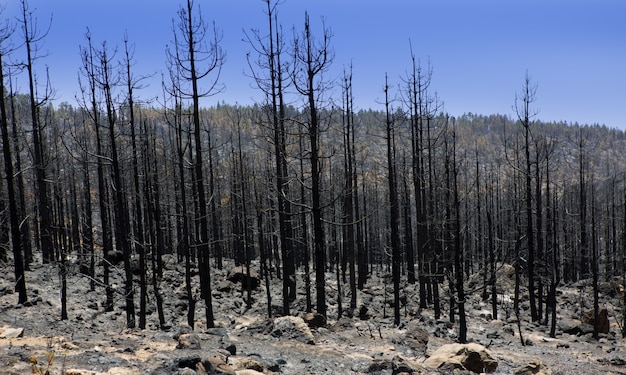
Ecologically, the decline in forest health threatens biodiversity. Many plant and animal species are specially adapted to specific forest conditions; changes in forest structure, species composition, or the occurrence of disturbances can lead to habitat loss and population declines. For instance, species that rely on specific tree types or old-growth forests are particularly vulnerable to changes brought about by climate change.
Broader Societal Impacts
The health of US forests is intertwined with broader societal well-being, providing essential ecosystem services that are often taken for granted. Their degradation impacts everything from the air we breathe to the water we drink.
- Loss of Timber Revenue: Reduced harvestable timber due to stress and mortality.
- Decreased Tourism: Damaged landscapes deter visitors, hurting local economies.
- Water Quality Decline: Increased erosion and loss of filtration services can affect water supplies.
- Biodiversity Loss: Habitat destruction and altered ecosystems threaten species survival.
Beyond timber and tourism, forests play a crucial role in regulating water cycles. Healthy forests act as natural sponges, absorbing rainfall, filtering water, and slowly releasing it into streams and rivers, providing vital freshwater supplies. When forests are degraded, this regulatory capacity diminishes, leading to increased runoff, erosion, and reduced water quality downstream, impacting agricultural uses and municipal water supplies.
The long-term ecological consequences include changes in soil health, increased susceptibility to invasive species, and shifts in entire ecosystem dynamics that can be difficult or impossible to reverse. Addressing climate change’s impact on forests is therefore not just an environmental imperative but a societal one, requiring integrated approaches that recognize the full spectrum of values forests provide.
Future Outlook and Mitigation Efforts
The future health of US forests and their capacity to sequester carbon will largely depend on the global trajectory of greenhouse gas emissions and the concerted efforts to mitigate climate change. While adaptation strategies are crucial for building resilience, they alone cannot fully offset the impacts of unmitigated warming. The outlook suggests that without substantial reductions in emissions, the challenges to forest health will intensify, potentially compromising their vital climate service.
Current scientific consensus indicates that the role of US forests as carbon sinks could diminish significantly under higher emission scenarios. Models predict increased tree mortality, greater fire frequencies, and shifts in species distribution that could turn some forest areas into net carbon sources. This grim outlook underscores the urgency of aggressive climate action on a global scale.
Pathways to Forest Resilience
While the challenges are formidable, a combination of global emission reductions and targeted local strategies offers a pathway towards securing the future of US forests as powerful natural climate solutions. Collective action is key to mitigating the most severe impacts.
- Global Emission Cuts: Reducing CO2 emissions is the primary long-term solution.
- Enhanced Forest Management: Implementing proactive strategies for resilience and carbon storage.
- Reforestation & Afforestation Goals: Expanding forest cover to increase carbon uptake.
- International Cooperation: Collaborative efforts to protect and restore global forest ecosystems.
Mitigation efforts extend beyond simply protecting existing forests. Large-scale reforestation and afforestation initiatives, when implemented with ecological integrity, can significantly enhance carbon uptake. These efforts must consider species suitability to future climates and ensure long-term carbon storage—for example, by protecting reforested areas from future disturbance.
Ultimately, securing the health of US forests and their ability to sequester carbon is inextricably linked to broader climate policy. Investing in renewable energy, improving energy efficiency, and transitioning away from fossil fuels are foundational steps that will directly ease the pressure on forest ecosystems. Furthermore, continued research, monitoring, and international cooperation are essential to adapting to a changing climate and ensuring forests remain integral to a sustainable future.
| Key Aspect | Brief Description |
|---|---|
| 🔥 Forest Stressors | Climate change increases wildfires, pest outbreaks, and droughts, undermining forest health. |
| 🌲 Carbon Sequestration | Stressed or dying trees reduce carbon uptake, turning forests into carbon sources. |
| 🌍 Regional Vulnerability | Impacts vary by biome, from Western wildfires to Eastern pest shifts and sea-level rise. |
| 🛡️ Adaptation Efforts | Proactive management, including fuel reduction and reforestation, is crucial for resilience. |
Frequently Asked Questions
▼
Climate change primarily impacts tree growth through altered temperature and precipitation patterns. Increased temperatures can lead to drought stress, reducing water availability and forcing trees to close stomata, which limits CO2 uptake. While some areas may experience extended growing seasons, the negative effects of heat stress and water scarcity often override potential benefits, leading to slower growth and reduced overall carbon sequestration.
▼
Yes, forests can transition from carbon sinks to carbon sources. When trees die from wildfires, insect outbreaks, or severe drought, the carbon stored in their biomass is released back into the atmosphere through decomposition or combustion. If tree mortality and disturbance rates exceed the forest’s capacity for regeneration and growth, the ecosystem becomes a net emitter of carbon, contributing to further atmospheric CO2 accumulation.
▼
Feedback loops describe a cycle where a change in one system component affects another, which in turn influences the first. In forests, a negative feedback loop occurs when forests absorb CO2, slowing climate warming. A positive feedback loop happens when warming leads to forest degradation (e.g., fires, die-off), releasing stored carbon and accelerating warming further, creating a self-reinforcing cycle of climate change.
▼
Forest diversity is crucial for resilience. Monocultures or low-diversity stands are often more susceptible to widespread damage from specific pests, diseases, or extreme weather events. Diverse forests, with a variety of tree species, genetic variations, and age classes, tend to be more robust and better equipped to withstand environmental disturbances. This biodiversity provides a buffer, allowing some species to thrive even as others are stressed, maintaining overall ecosystem function and carbon sequestration.
▼
Adaptive forest management strategies include fuel reduction treatments like prescribed burns and thinning to mitigate wildfire risks. Promoting species and genetic diversity enhances resilience against pests and diseases. Reforestation and afforestation efforts, using climate-adapted tree species, are vital for increasing carbon uptake. Additionally, integrating climate projections into long-term forest planning helps anticipate future conditions and guide more informed, sustainable decisions.
Conclusion
The profound and multifaceted ways in which climate change impacts the health of US forests present a critical challenge to their ability to sequester carbon. From increased wildfires and pest outbreaks to altered growth patterns and regional vulnerabilities, these vital ecosystems are under unprecedented stress. Countering these threats demands a concerted effort that combines aggressive global emission reductions with strategic, localized forest management and adaptation initiatives. Protecting and restoring US forests is not merely an ecological imperative; it is a fundamental pillar in our collective endeavor to stabilize the global climate and secure a sustainable future for both nature and society.

